First Alert SCO500 Handleiding
First Alert
Niet gecategoriseerd
SCO500
Bekijk gratis de handleiding van First Alert SCO500 (10 pagina’s), behorend tot de categorie Niet gecategoriseerd. Deze gids werd als nuttig beoordeeld door 150 mensen en kreeg gemiddeld 4.4 sterren uit 75.5 reviews. Heb je een vraag over First Alert SCO500 of wil je andere gebruikers van dit product iets vragen? Stel een vraag
Pagina 1/10

TABLE OF CONTENTS
Introduction . . . . . . . . . . . . . . . . . . . . . . . . . . . . . . . . . . . . . . . . . . . . . .1-2
Wireless Operation . . . . . . . . . . . . . . . . . . . . . . . . . . . . . . . . . . . . . .1
Fir . . . . . . . . . . . . . . . . . . . . . . . . . . . . . . . . . . . . . . . . .e Safety Tips 2
Basic Safety Information . . . . . . . . . . . . . . . . . . . . . . . . . . . . . . . . .2
Step By Step Guide to Programming This Alarm . . . . . . . . . . . . . . . .2
Adding and Linking Additional ONELINK
® Alarms . . . . . . . . . . . . .2
What You Will See and Hear With This Alarm . . . . . . . . . . . . . . . . .2
Installation . . . . . . . . . . . . . . . . . . . . . . . . . . . . . . . . . . . . . . . . . . . . . . .3-4
Where to Install This Alarm . . . . . . . . . . . . . . . . . . . . . . . . . . . . . . .3
Where This Alarm Should NOT Be Installed . . . . . . . . . . . . . . . . . .3
How to Install This Alarm . . . . . . . . . . . . . . . . . . . . . . . . . . . . . . . . .4
Optional Locking Features . . . . . . . . . . . . . . . . . . . . . . . . . . . . . . . . . . .4
If Your Smoke/CO Alarm Sounds . . . . . . . . . . . . . . . . . . . . . . . . . . . .5-6
What To Do First–Identify The Type Of Alarm Signal . . . . . . . . . . .5
If the CO Alarm Sounds . . . . . . . . . . . . . . . . . . . . . . . . . . . . . . . . . .5
If the Smoke Alarm Sounds . . . . . . . . . . . . . . . . . . . . . . . . . . . . . . .5
Using the Silence Features . . . . . . . . . . . . . . . . . . . . . . . . . . . . . .5-6
Latching Features . . . . . . . . . . . . . . . . . . . . . . . . . . . . . . . . . . . . . . .6
Weekly Testing . . . . . . . . . . . . . . . . . . . . . . . . . . . . . . . . . . . . . . . . . . . . .6
Regular Maintenance . . . . . . . . . . . . . . . . . . . . . . . . . . . . . . . . . . . . . . .6
What You Need To Know About CO . . . . . . . . . . . . . . . . . . . . . . . . . .6-7
What is CO? . . . . . . . . . . . . . . . . . . . . . . . . . . . . . . . . . . . . . . . . . . .6
Symptoms of CO Poisoning . . . . . . . . . . . . . . . . . . . . . . . . . . . . . .6
Finding the Source of CO After an Alarm . . . . . . . . . . . . . . . . . . . .6
Potential Sources of CO in the Home . . . . . . . . . . . . . . . . . . . . . . .7
How Can I Protect My Family From CO Poisoning? . . . . . . . . . . . . . .7
Regulatory Information For Smoke/CO Alarms . . . . . . . . . . . . . . . .7-8
Regulatory Information for CO Alarms . . . . . . . . . . . . . . . . . . . . . . .7
Regulatory Information for Smoke Alarms . . . . . . . . . . . . . . . . . . . .8
Recommended Locations for Smoke Alarms . . . . . . . . . . . . . . . . .8
About Smoke Alarms . . . . . . . . . . . . . . . . . . . . . . . . . . . . . . . . . . . .8
Special Compliance Considerations . . . . . . . . . . . . . . . . . . . . . . . . . . .8
General Limitations Of Smoke/CO Alarms . . . . . . . . . . . . . . . . . . . . . .9
Troubleshooting Guide . . . . . . . . . . . . . . . . . . . . . . . . . . . . . . . . . . . . . .9
Limited Warranty . . . . . . . . . . . . . . . . . . . . . . . . . . . . . . . . . . . . . . . . .10
© 2007 BRK Brands, Inc., a subsidiary of Jarden Corporation.
3901 Liberty Street Road, Aurora, IL 60504-8122
All rights reserved.
Consumer Affairs: (800) 323-9005 • www.firstalert.com
Printed in Mexico
M08-0146-004 J1
03/07
ONELINK®
TALKING COMBINATION
SMOKE/CARBON MONOXIDE ALARM WITH
PROGRAMMABLE LOCATION
Features:
• Separate sensors to detect
smoke and CO; the two
alarm sensors work
independently
• Voice with programmable
location
• Separate audible and visual
signals to indicate alarm
levels of smoke or CO
• Wireless interconnect
• Powered by two “AA”
batteries
• Side access drawer for
easy battery replacement
USER’S MANUAL
Model SCO500
UL STANDARD 217
UL STANDARD 2034
1
WIRELESS OPERATION
First Alert®ONELINK®Technology is the easy, cost-effective way to
provide your family with whole-home safety. All ONELINK®Alarms
communicate with each other without wires or connectors. When one
Alarm sounds, they all sound. This provides your family with an earlier
warning of potential danger, and gives you more time to react.
The communication distance (range) between any two ONELINK
®Alarms
is typically 50 feet (15 meters) inside of a home. Some features of a
home, such as the number of floors, number/size of rooms, furniture and
types of building materials used may reduce the range of the Alarms.
Examples include: suspended ceilings, ductwork, large metallic appli-
ances (refrigerators) and metal studs. A feature of ONELINK
®Alarms is
that they operate as a mesh network. All Alarms will repeat any alarm
signal that is received to all other ONELINK®Alarms. Interference from
structural conditions can be overcome by adding additional Alarms to
route the wireless signal around obstructions.
• The range and proper operation of any wireless device will
vary depending on its surroundings. It is very important that
each Alarm is tested individually before and after installation
to make sure that all Alarms respond properly.
• The ONELINK®Alarms are not to be used outdoors or to
transmit between buildings. The Alarms will not communicate
properly under these conditions.
• Metal objects and metallic wallpaper may interfere with
signals from wireless Alarms. Alarms should be tested after
changes to your home such as remodeling, moving furniture,
and with metal doors opened and closed.
Your First Alert®ONELINK®Smoke/CO Alarm will automatically commu-
nicate both potential fires and carbon monoxide presence with all other
First Alert®ONELINK®Smoke/CO Alarms.
FCC NOTICE: This device complies with Part 15 of the FCC Rules.
Operation is subject to the following two conditions: (1) This device may
not cause harmful interference, and (2) this device must accept any
interference received, including interference that may cause undesired
operation. FCC ID: M7U5001L
Changes or modifications not expressly approved by BRK Brands,
Inc. could void the user’s authority to operate the equipment.
INTRODUCTION
Thank you for choosing First Alert
®for your Smoke and Carbon
Monoxide Alarm needs. You have purchased a state-of-the-art Smoke &
Carbon Monoxide Alarm designed to provide you with early warning of a
smoke and/or Carbon Monoxide danger. Key features include:
Smoke & Carbon Monoxide Combination Alarm. One alarm protects
against two deadly household threats.
ONELINK
®
Enabled. Alarm automatically communicates with other
ONELINK
®
enabled alarms when installed.
Exclusive Voice Warning with Location will tell you the preprogrammed
location of the initiating unit and danger detected. Programmable up to
11 locations (ex. "basement"). When alarms sounds, if programmed for
basement it will say "Warning, evacuate, smoke in basement" along with
all other installed ONELINK®Voice alarms.
Spread Spectrum Horn Tone. Lower and varying horn frequency
makes it easier for elderly with normal age related hearing loss to hear
horn. Sweeps through the 2200 – 3400 Hz range.
RF Interconnect. Reliable and secure radio frequency communication
between alarms. 915 MHz frequency with 65,000 security codes and 3
channel frequency hopping.
Single Button Test/Silence eliminates confusion. Depending on what
mode the alarm is in, pushing the button provides different functions
such as testing the alarm, silencing the alarm, re-testing the alarm when
in silence and clearing the Latching features.
Two Silence Features. Temporarily silence low battery chirp for up to
eight hours before replacing low battery or silence an unwanted alarm
for several minutes.
Two Latching Features. Alarm Latch: Easily identifies initiating alarm
even after alarm condition has subsided. Low Battery Latch: Identifies
which unit is in low battery condition.
Perfect Mount System includes a gasketless base for easy installation
and a mounting bracket that keeps the alarm secure over a wide
rotation range to allow for perfect alignment.
6 Year End of Life Timer. Every 24 hours of operation a counter stored
in memory is updated. When the count equals 6 years of true operation,
meaning actually powered-up, a malfunction chirp (triple chirp) will
sound once a minute at the time of the 45 second Power-LED flash.
All First Alert®Smoke Alarms conform to regulatory requirements,
including UL217 and are designed to detect particles of combustion.
Smoke particles of varying number and size are produced in all fires.
Ionization technology is generally more sensitive than photoelectric
technology at detecting small particles, which tend to be produced
in greater amounts by flaming fires, which consume combustible
materials rapidly and spread quickly. Sources of these fires may include
paper burning in a wastebasket, or a grease fire in the kitchen.
Photoelectric technology is generally more sensitive than ionization
technology at detecting large particles, which tend to be produced
in greater amounts by smoldering fires, which may smolder for hours
before bursting into flame. Sources of these fires may include cigarettes
burning in couches or bedding.
For maximum protection, use both types of Smoke Alarms on
each level and in every bedroom of your home.
IMPORTANT! PLEASE READ CAREFULLY AND SAVE.
This user’s manual contains important information about your
Combination Carbon Monoxide & Smoke Alarm’s operation. If you are
installing this Alarm for use by others, you must leave this manual—or
a copy of it—with the end user.

FIRE SAFETY TIPS
Follow safety rules and prevent hazardous situations: 1) Use smoking
materials properly. Never smoke in bed. 2) Keep matches or lighters
away from children; 3) Store flammable materials in proper containers;
4) Keep electrical appliances in good condition and don’t overload
electrical circuits; 5) Keep stoves, barbecue grills, fireplaces and
chimneys grease- and debris-free; 6) Never leave anything cooking on
the stove unattended; 7) Keep portable heaters and open flames, like
candles, away from flammable materials;8) Don’t let rubbish accumulate.
Keep alarms clean, and test them weekly. Replace alarms immediately
if they are not working properly. Smoke Alarms that do not work cannot
alert you to a fire. Keep at least one working fire extinguisher on every
floor, and an additional one in the kitchen. Have fire escape ladders or
other reliable means of escape from an upper floor in case stairs are
blocked.
BASIC SAFETY INFORMATION
• Dangers, Warnings, and Cautions alert you to important
operating instructions or to potentially hazardous situations.
Pay special attention to these items.
• This Smoke/CO Alarm is approved for use in single-family
residences.
•
This combination Smoke/Carbon Monoxide Alarm has two
separate alarms. The CO Alarm is not designed to detect fire
or any other gas. It will only indicate the presence of carbon
monoxide gas at the sensor. Carbon monoxide gas may be
present in other areas. The Smoke Alarm will only indicate the
presence of smoke that reaches the sensor. The Smoke Alarm
is not designed to sense gas, heat or flames.
• This Smoke/CO Alarm cannot operate without working
batteries. Removing the batteries for any reason, or failing to
replace the batteries at the end of their service life, removes
your protection.
• NEVER ignore any alarm. See “If Your Smoke/CO Alarm
Sounds” for more information on how to respond to an alarm.
Failure to respond can result in injury or death.
• The Silence Features are for your convenience only and will
not correct a problem. See "Using the Silence Features" for
details. Always check your home for a potential problem after
any alarm. Failure to do so can result in injury or death.
• Test this Smoke/CO Alarm once a week. If the Alarm ever fails
to test correctly, have it replaced immediately! If the Alarm is
not working properly, it cannot alert you to a problem.
• This product is intended for use in ordinary indoor locations
of family living units. It is not designed to measure CO levels
in compliance with Occupational Safety and Health
Administration (OSHA) commer ds.cial or industrial standar
Individuals with medical conditions that may make them more
sensitive to carbon monoxide may consider using warning
devices which provide audible and visual signals for carbon
monoxide concentrations under 30 ppm. For additional
information on carbon monoxide and your medical condition
contact your physician.
2
STEP BY STEP GUIDE TO PROGRAMMING
THIS ALARM
FOR FIRST TIME AND WHEN CHANGING BATTERIES
Action:
1. Insert batteries (2, AA batteries).
Alarm Will Say:
“Welcome, First Alert Smoke and
Carbon Monoxide Alarm.”
“No location programmed” if first
time or “[Location, example:
“Basement”] location programmed”
when changing batteries.
“To select location, press and hold
test button now.”
2. Press & Hold Test Button if
you would like to program the
location or change the location
of the Alarm. Release button
after Alarm responds.
“To save location, press and hold
test button after location is heard.”
Alarm will speak list of locations
(see below).
3. After you hear the location of
where you are placing the Alarm,
Press & Hold the Test Button.
“[Location, example: “Basement”]
location saved.”
If no location is chosen:
“No location saved.”
Your Alarm has now been programmed for the location of your choice.
Available locations:
Basement Kitchen Child’s Bedroom
Living Room Dining Room Master Bedroom
Family Room No Location Guest Bedroom
Office Hallway Utility Room
NOTE: Steps 1 through 3 need to be completed within two minutes.
If more than two minutes pass, the Green power LED will stop
blinking. Simply open the battery drawer of the second Alarm and
repeat steps 1 through 3.
1. Insert the batteries into the
battery drawer of the next
Alarm. DO NOT CLOSE THE
DRAWER.
2. Press and hold the test
button and then close the
battery drawer.
3. Once you hear the unit chirp,
release the test button.
The Green power LED will start to blink indicating the ONELINK
®
Alarm is waiting for program data from one of the other setup
ONELINK®Alarms.
4. Press and hold the test button on the first Alarm, until the second
Alarm
chirps and its Green power LED stops blinking. Then release
the test button.
5. If you have purchased the hardwired battery back-up ONELINK®
Alarm, you can now connect the hardwired Alarm by installing the
three-wire connector on the ceiling to the Alarm.
6. Repeat steps 1-5 for additional ONELINK®Alarms.
You have now successfully linked your new ONELINK
®Alarms. To
add additional Alarms at a later time, follow steps 1 through 5.
ADDING AND LINKING ADDITIONAL ONELINK
®
ALARMS
WHAT YOU WILL SEE AND HEAR WITH THIS ALARM
Under Normal Operations
Voice: Power/Smoke LED:Silent Flashes Green
once a minute
Horn: CO LED:Silent Off
When You Test the Alarm
Voice: “Testing.” 3 beeps, pause, 3 beeps; Horn: Voice: “Warning,
evacuate smoke in [Location, example: “Basement”].
Evacuate.”
Smoke LED: Flashes Red in sync with the horn pattern
Horn: 4 fast beeps, pause, 4 fast beeps;
Voice: “Warning, evacuate carbon monoxide in [Location, example:
“Basement”]. Evacuate.” Pause. “Highest carbon monoxide
level was [CO level example: _0_ ppm]”.
CO LED: Flashes Red in sync with the horn pattern
If Battery Becomes Low or is Missing
Voice: “Replace battery in [Location, example “Kitchen”].” Repeated
every 5 hours
Horn: chirps once a minute
Power/Smoke LED: Flashes Green On for 2 seconds/Off for
2 seconds. Low Battery Latch is now engaged.
CO LED: Off
If Alarm is Not Operating Properly (MALFUNCTION SIGNAL)
Voice: “Detector error in [Location, example “Kitchen”], please see
manual” (refer to Troubleshooting Guide).
Repeated every 5 hours.
Horn: Three rapid chirps every minute
Power/Smoke LED: Flashes approximately once a minute
CO LED: Off
Alar m Levels of CO are Detected
Voice: “Warning, evacuate carbon monoxide in [Location, example:
“Kitchen”]. Evacuate.” “
____ ppm.”
Horn: 4 beeps, pause, 4 beeps, voice*
Power/Smoke LED: Off
CO LED: During Alarm: Flashes Red in sync with the horn pattern.
After Alarm: Flashes Red On for 2 seconds/Off for 2
seconds. CO Alarm Latch is now engaged.
*NOTE: If unit goes into CO alarm, the regular 4 beeps-brief pause
cycle will repeat for four minutes. After four minutes, the pause will
increase to one minute.
Smoke is Detected
Voice: “Warning, evacuate smoke in [Location, example: “Kitchen”].
Evacuate.”
Horn: 3 beeps, pause, 3 beeps, voice
Power/Smoke LED: During Alarm: Flashes Red in sync with the
horn pattern. After Alarm: Flashes Red On for 2 seconds/
Off for 2 seconds. Smoke Alarm Latch is now engaged.
CO LED: Off
Smoke Alarm is Silenced
Voice: Silent
Horn: Off
Power/Smoke LED: Flashes Red
CO LED: Off
CO Alarm is Silenced
Voice: Silent
Horn: Off
Power/Smoke LED: Off
CO LED: Flashes Red

INSTALLATION
WHERE TO INSTALL THIS ALARM
Minimum coverage for Smoke Alarms, as recommended by the
National Fire Protection Association (NFPA), is one Smoke Alarm on
every floor, in every sleeping area, and in every bedroom (See
“Regulatory Information For Smoke Alarms” for details on the NFPA
recommendations).
For CO Alarms, the National Fire Protection Association (NFPA)
recommends that a CO Alarm should be centrally located outside of
each separate sleeping area in the immediate vicinity of the bedrooms.
For added protection, install additional CO Alarms in each separate
bedroom, and on every level of your home.
NOTE: For added protection, install an additional Smoke/CO Alarm at least
15 feet (4.6 meters) away from the furnace or fuel burning heat source
where possible. In smaller homes or in manufactured homes where this
distance cannot be maintained, install the Alarm as far away as possible
from the furnace or other fuel burning source. Installing the Alarm closer
than 15 feet (4.6 meters) will not harm the Alarm, but may increase the
frequency of unwanted alarms.
In general, install combination Smoke and Carbon Monoxide Alarms:
• In the hall near every sleeping area. If your home has multiple
sleeping areas, install a unit in each. If a hall is more than 40 feet
(12 meters) long, install a unit at each end.
• On every level of your home, including finished attics and basements.
• Inside every bedroom, especially if people sleep with the door partly
or completely closed.
• At the top of first-to-second floor stairs.
• At the bottom of the basement stairs.
• For additional coverage, install Alarms in all rooms, halls, and storage
areas, where temperatures normally remain between 40˚ F and 100˚F
(4˚ C and 38˚ C).
Recommended Placement
• When installing on the wall, the top edge of Smoke Alarms should
be placed between 4 inches (102 mm) and 12 inches (305 mm) from
the wall/ceiling line.
• When installing on the ceiling, place the Alarm as close to the center
as possible.
• In either case, install at least 4 inches (102 mm) from where the
wall and ceiling meet. See “Avoiding Dead Air Spaces” for more
information.
NOTE: For any location, make sure no door or other obstruction could
keep carbon monoxide or smoke from reaching the Alarm.
Installing Smoke/CO Alarms in Mobile Homes
For minimum security install one Smoke/CO Alarm as close to each
sleeping area as possible. For more security, put one unit in each room.
Many older mobile homes (especially those built before 1978) have little
or no insulation. If your mobile home is not well insulated, or if you are
unsure of the amount of insulation, it is important to install units on
inside walls only.
SUGGESTED AREAS FOR INSTALLING
SMOKE ALARMS, CO ALARMS, AND COMBO UNITS
SMOKE ALARM WITH
SILENCE FEATURE
CO ALARMS
BOTH, OR COMBINATION
SMOKE/CO ALARMS
SMOKE ALARMS
KEY:
Suggested locations are based on
NFPA recommendations (NFPA 72
for Smoke Alarms and NFPA 720 for
Carbon Monoxide Alarms). Always
refer to national and local codes
before beginning any installation.
In new construction AC and AC/DC smoke alarms MUST
be interconnected to meet NFPA recommendations.
3
WHERE THIS ALARM SHOULD NOT BE INST ALLED
Do NOT locate this Smoke/CO Alarm:
• In garages, furnace rooms, crawl spaces and unfinished attics. Avoid
extremely dusty, dirty or greasy areas.
• Where combustion particles are produced. Combustion particles
form when something burns. Areas to avoid include poorly ventilated
kitchens, garages, and furnace rooms. Keep units at least 20 feet
(6 meters) from the sources of combustion particles (stove, furnace,
water heater, space heater) if possible. In areas where a 20-foot
(6 meter) distance is not possible – in modular, mobile, or smaller
homes, for example – it is recommended the Smoke Alarm be
placed as far from these fuel-burning sources as possible. The
placement recommendations are intended to keep these Alarms at
a reasonable distance from a fuel-burning source, and thus reduce
“unwanted” alarms. Unwanted alarms can occur if a Smoke Alarm is
placed directly next to a fuel-burning source. Ventilate these areas
as much as possible.
• Within 5 feet (1.5 meters) of any cooking appliance. In air streams
near kitchens. Air currents can draw cooking smoke into the smoke
sensor and cause unwanted alarms.
• In extremely humid areas. This Alarm should be at least 10 feet
(3 meters) from a shower, sauna, humidifier, vaporizer, dishwasher,
laundry room, utility room, or other source of high humidity.
• In direct sunlight.
• In turbulent air, like near ceiling fans or open windows. Blowing air
may prevent CO or smoke from reaching the sensors.
• In areas where temperature is colder than 40˚ F (4˚ C) or hotter than
100˚ F (38˚ C). These areas include non-airconditioned crawl spaces,
unfinished attics, uninsulated or poorly insulated ceilings, porches,
and garages.
• In insect infested areas. Insects can clog the openings to the sensing
chamber.
• Less than 12 inches (305 mm) away from fluorescent lights.
Electrical “noise” can interfere with the sensor.
• In “dead air” spaces. See “Avoiding Dead Air Spaces”.
AVOIDING DEAD AIR SPACES
“Dead air” spaces may prevent smoke from reaching the Smoke/CO
Alarm. To avoid dead air spaces, follow installation recommendations
below.
On ceilings, install Smoke/CO Alarms as close to the center of the
ceiling as possible. If this is not possible, install the Smoke/CO Alarm at
least 4 inches (102 mm) from the wall or corner.
For wall mounting (if allowed by building codes), the top edge of
Smoke/CO Alarms should be placed between 4 inches (102 mm) and
12 inches (305 mm) from the wall/ceiling line, below typical “dead air”
spaces.
On a peaked, gabled, or cathedral ceiling, install first Smoke/CO
Alarm within 3 feet (0.9 meters) of the peak of the ceiling, measured
horizontally. Additional Smoke/CO Alarms may be required depending
on the length, angle, etc. of the ceiling's slope. Refer to NFPA 72 for
details on r ements for sloped or peaked ceilings.equir
Product specificaties
| Merk: | First Alert |
| Categorie: | Niet gecategoriseerd |
| Model: | SCO500 |
Heb je hulp nodig?
Als je hulp nodig hebt met First Alert SCO500 stel dan hieronder een vraag en andere gebruikers zullen je antwoorden
Handleiding Niet gecategoriseerd First Alert

30 Augustus 2023

30 Augustus 2023

30 Augustus 2023

30 Augustus 2023

30 Augustus 2023

9 Mei 2023

1 Mei 2023

12 April 2023

12 April 2023

10 April 2023
Handleiding Niet gecategoriseerd
- Fannova
- Focus Electrics
- Black And Decker
- Ermenrich
- ABE Arnhold
- Gasmate
- Envertech
- Corsair
- Gladiator
- Z CAM
- Vaddio
- Stadler Form
- Allsee
- Swissonic
- Emtec
Nieuwste handleidingen voor Niet gecategoriseerd
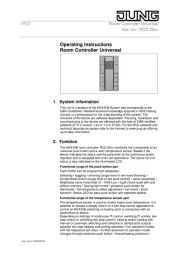
2 Augustus 2025
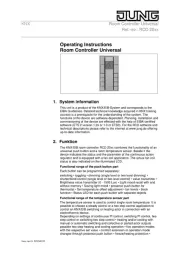
2 Augustus 2025
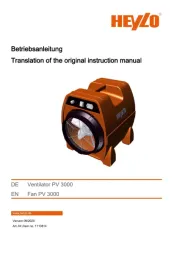
2 Augustus 2025
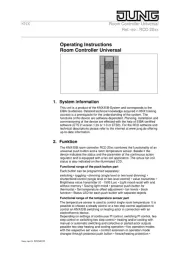
2 Augustus 2025
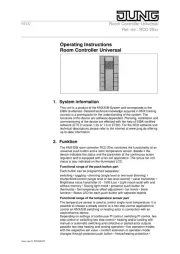
2 Augustus 2025
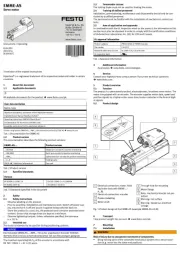
2 Augustus 2025
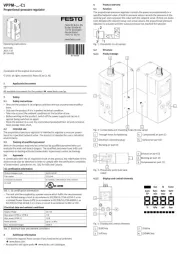
2 Augustus 2025
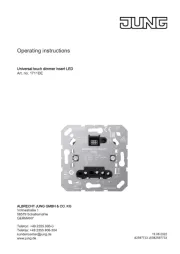
2 Augustus 2025
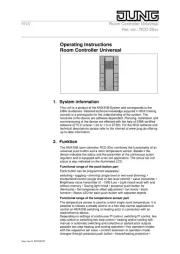
2 Augustus 2025
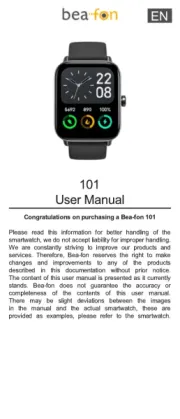
1 Augustus 2025